A couple weekends ago, the Southern California Horticultural Society hosted another “Coffee in the Garden,” and included was a garden that I had been advised not to miss should it come up for tour. (Thank you, Shirley Watts!) For her own home, Los Angeles garden designer Judy Horton has made a plant-rich garden that is inextricably linked to its little house in Beechwood Canyon, Hollywood, behind tall hedges on a winding, busy street. Small urban gardens interest me perhaps more than any other type, the intimate, personal kind that enfold a home and are capable of a mood-altering effect when one returns from, for example, brutal freeway traffic. The kinds that are made as though your very life and sanity depend on it. I’ve never thought of a garden as a luxury but, rather, a necessity, and these are the kind I also love to visit. A brief description will have to take the place of the layout photos I always neglect to take when touring gardens, because I generally talk too much and become far too absorbed in details. In my defense, only an aerial photo could do justice to the layout of this garden, which managed to be both densely planted and quietly spacious. It is a relatively young garden, started in 2005, but already full of mature trees and shrubs. Tall ficus hedges ensure complete privacy from the street, and Judy planted hedges of silvery, fast-growing germander, Teucrium fruticans, to enclose and separate the front garden from the driveway, as seen in an old photo below from SCHS.
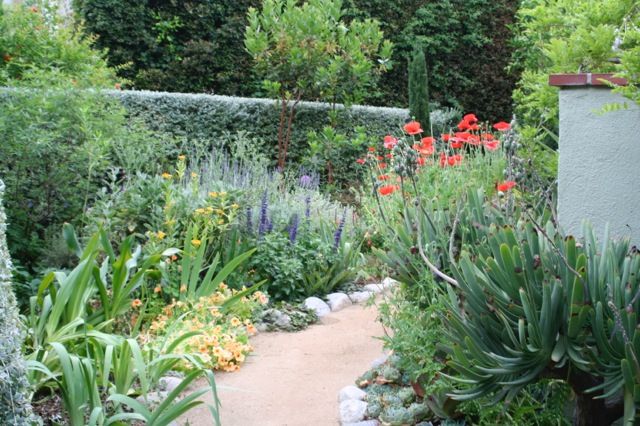
Decomposed granite paths encircle the house in the front garden, where lawn would traditionally be planted. One of our natives, a large toyon, Heteromeles arbutifolia, was in bloom in the corner of the hedges. A deep blue chaste tree also was in bloom here (Vitex agnus-castus). Pictured in this old photo to the left of the cypress is Arbutus x marina. Judy’s love of woody plants was everywhere in evidence. Not pictured but just beyond the Aloe plicatilis an enormous Grevillea ‘Moonlight’ flanked the entry steps to the front door.

I admit a big reason I tour gardens is a plant-specific form of FOMO, a fear of missing out on a beautiful, worthy plant that I’ve somehow overlooked. Judy’s garden was filled with FOMO rarities like this South African bulb (possibly a haemanthus) alongside classic mediterranean plants like grape, acanthus, olives, citrus, hellebores, and mediterranean-adaptive succulents, aloes and agaves. (The plant list she handed out was nine pages.)
I loved her catholic taste in plants.
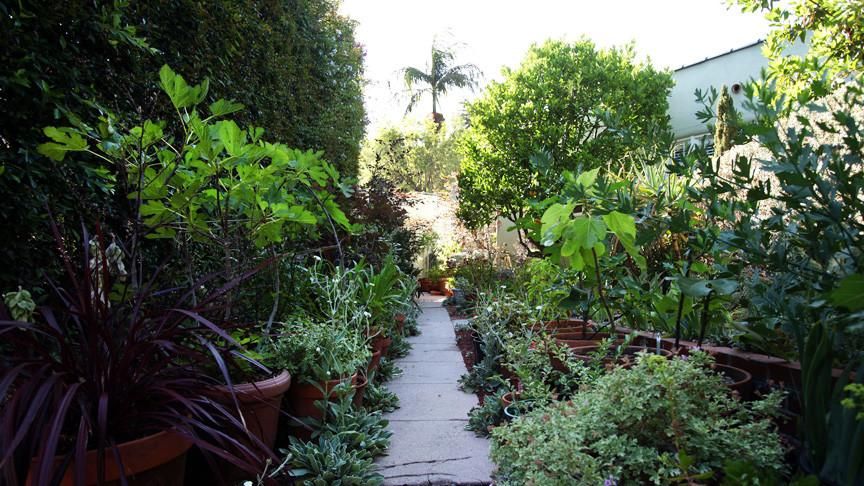
photo from The Los Angeles Times
Her driveway hidden behind the teucrium hedge was repurposed into a staging area for the countless pots now parked along its length.
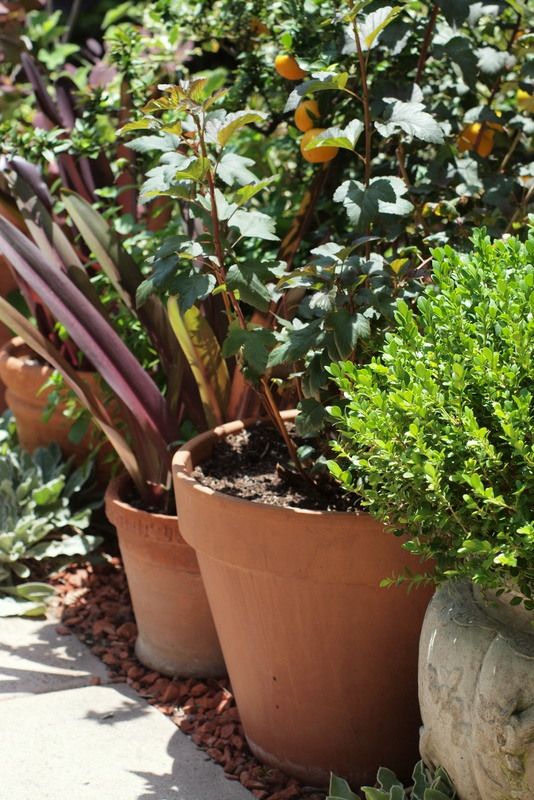
I was especially taken by the many woody things she grows in large containers (even a Cotinus ‘Golden Spirit’).
Being a designer’s garden, it’s also a laboratory for trying out plants before using them in clients’ gardens.
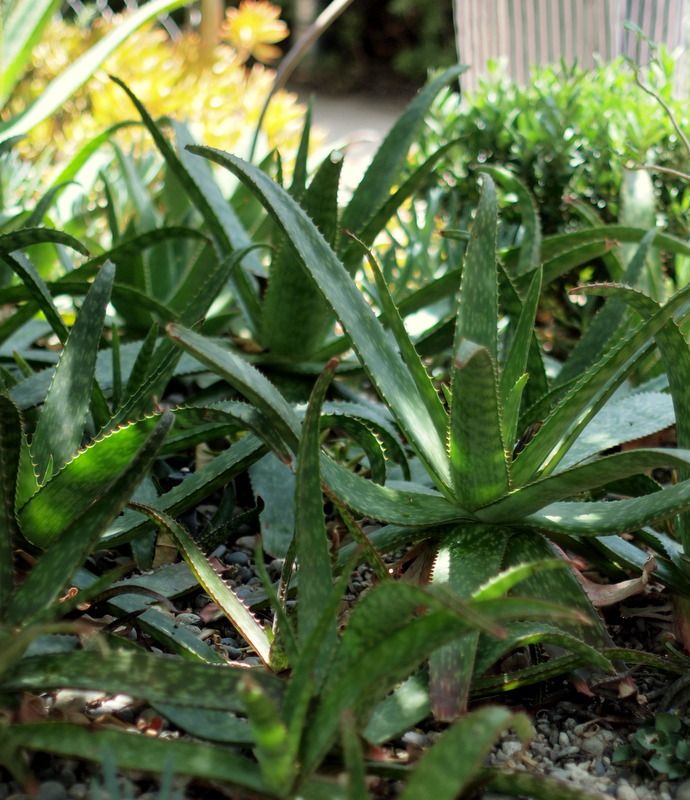
Alongside the driveway, in a bed against the house, an orange tree is underplanted with aloes, maculata and striata hybrids.

photo from The Los Angeles Times
If Judy’s garden had one overriding lesson, it would be to always keep in mind the relationship between house and garden.
Every window and doorway frames an iconic view, for every season, whether of camellias, citrus, grapes, bougainvillea.
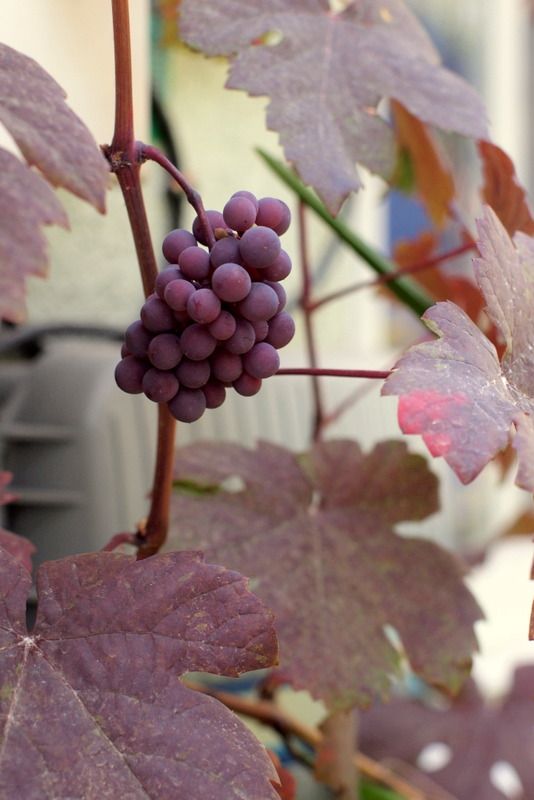

Steps to the back patio, massed with aeoniums.
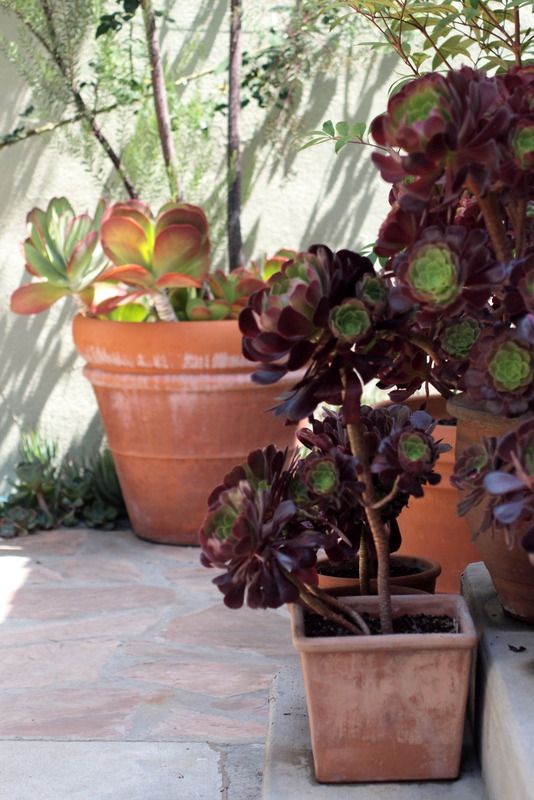
In the background is another potted tree, Acacia boormanii, underplanted with Kalanchoe thyrsiflora. A cane of the single scarlet climber ‘Altissimo’ arches into the frame.
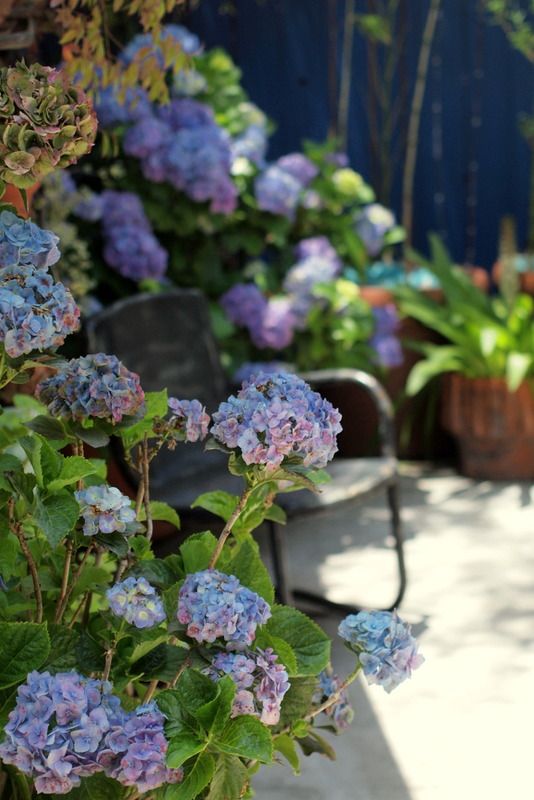
Pots of hydrangeas on the back patio, blued with aluminum sulfate. A portion of the fence is painted deep Moroccan blue.
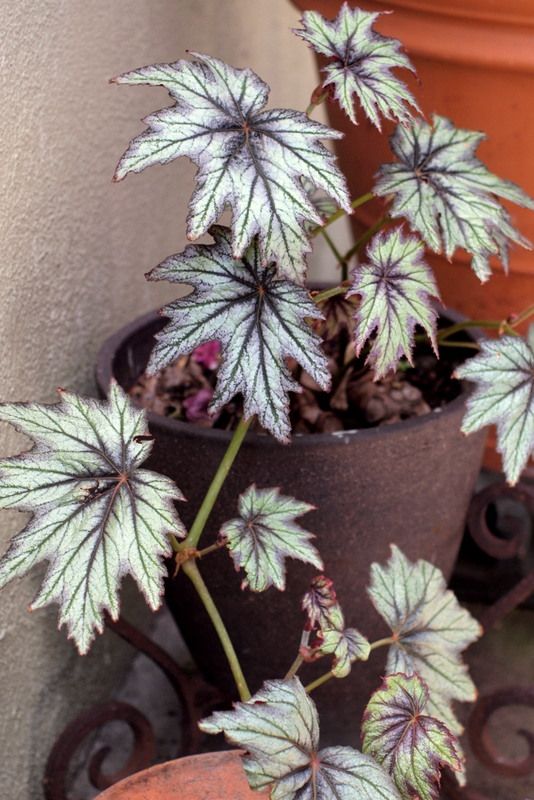
Every exposure is exploited, whether sun, dappled shade, or even the deeper shade that gathers in the narrow spaces that run alongside neighbor fences. Perfect for begonias.
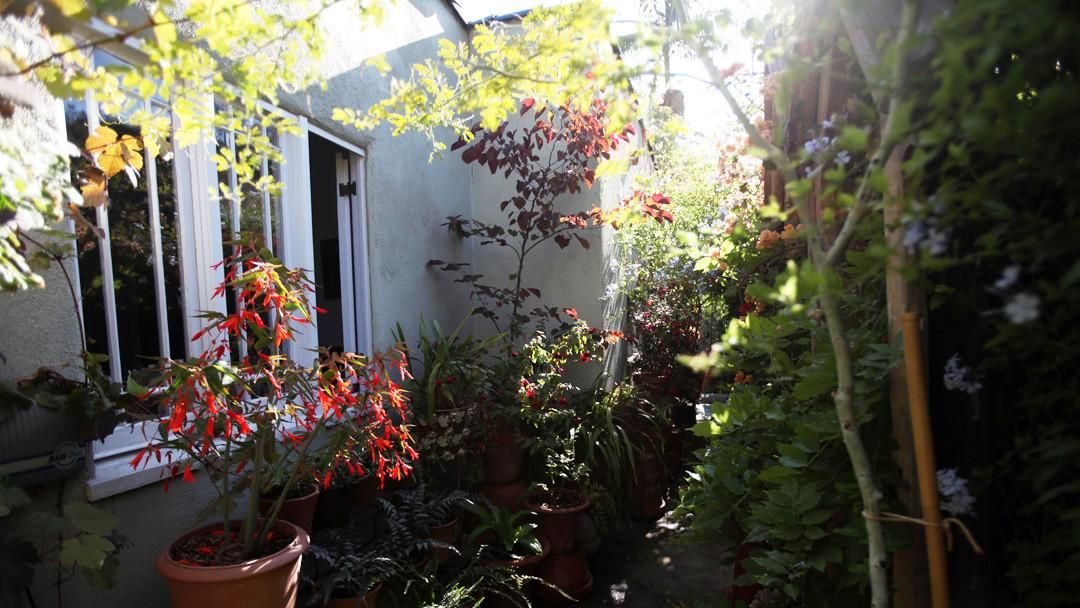
photo from The Los Angeles Times
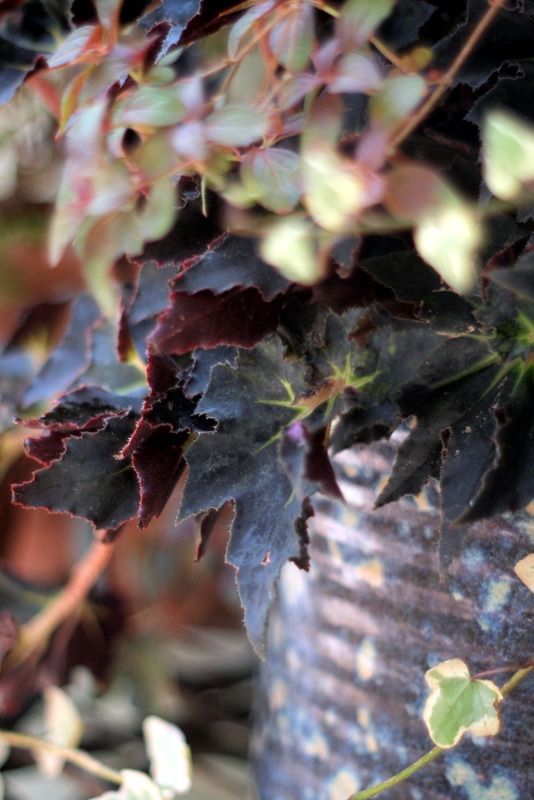
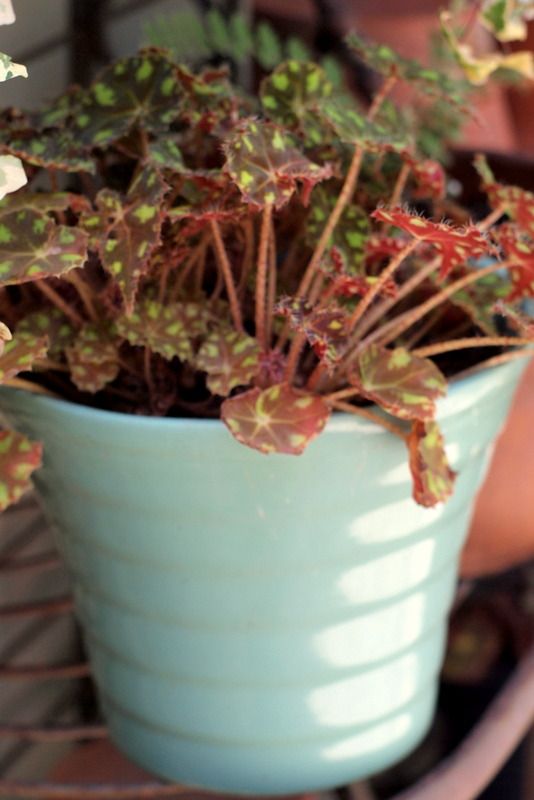
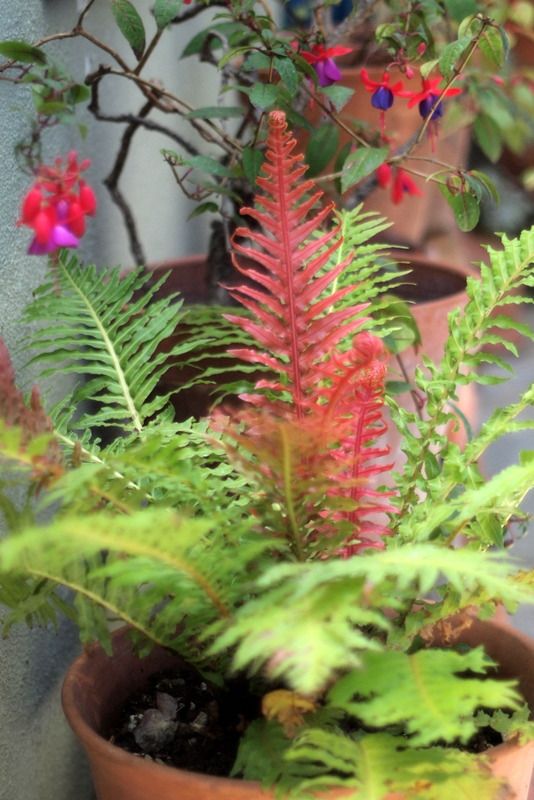
And ferns. Blechnum brasiliense, the Red Brazilian Tree Fern
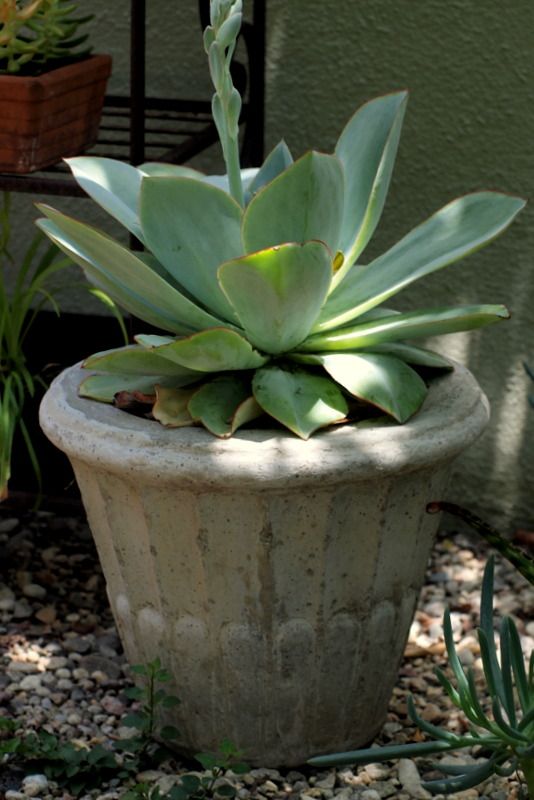
More of the innumerable potted plants, another reason I instantly admired this garden.
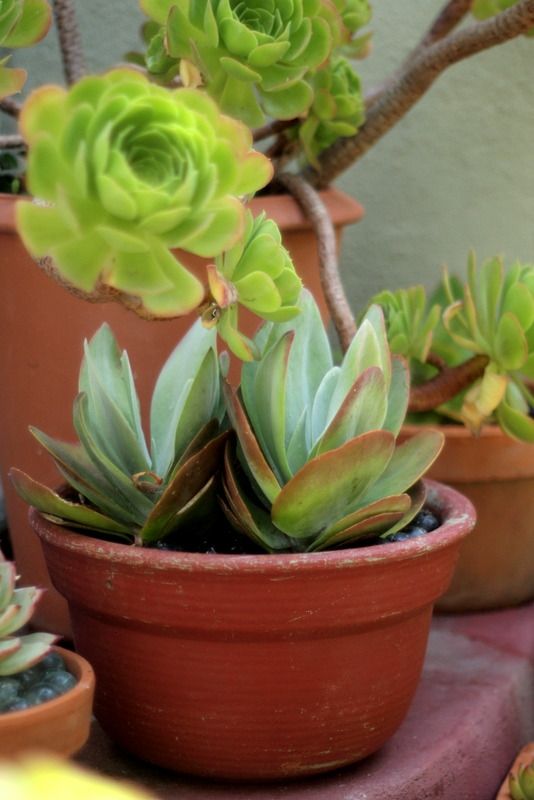
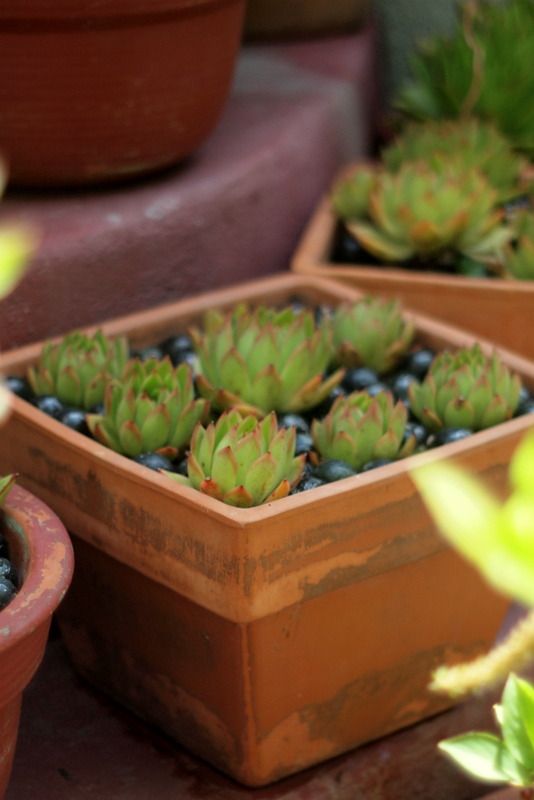
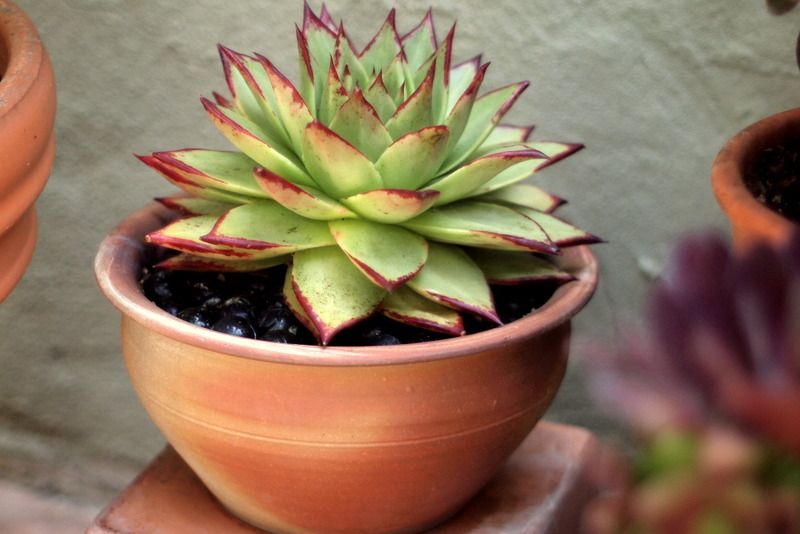
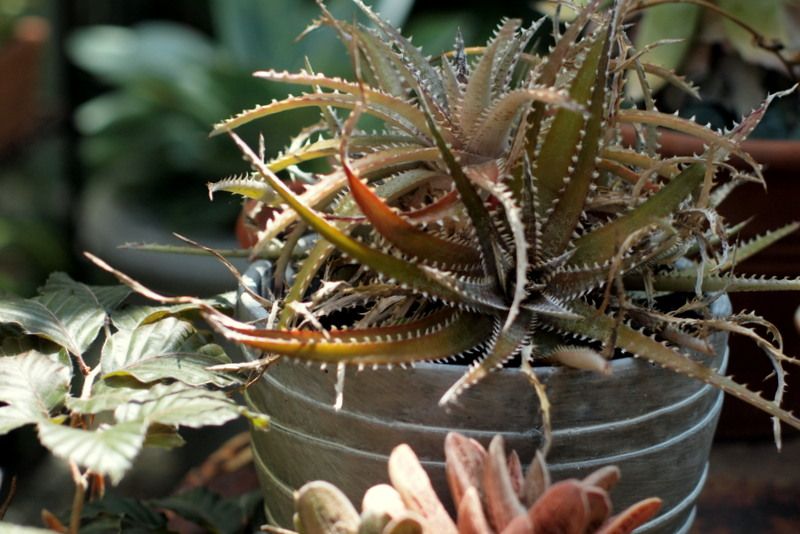
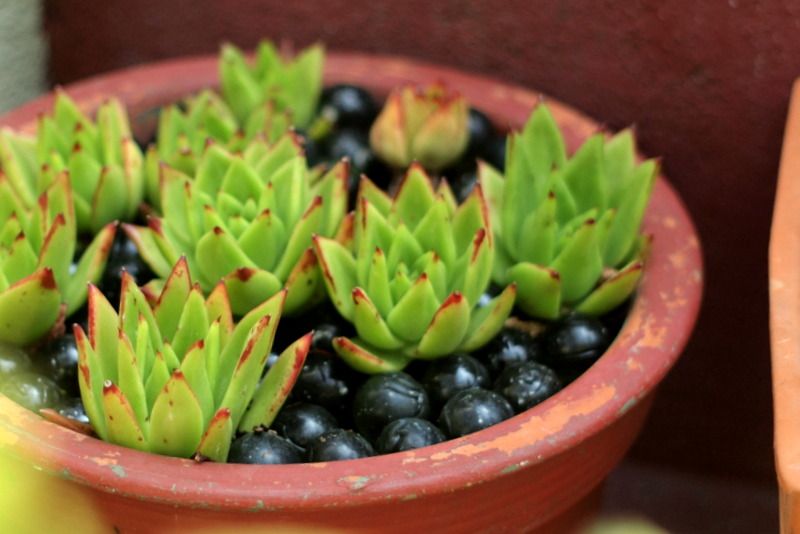
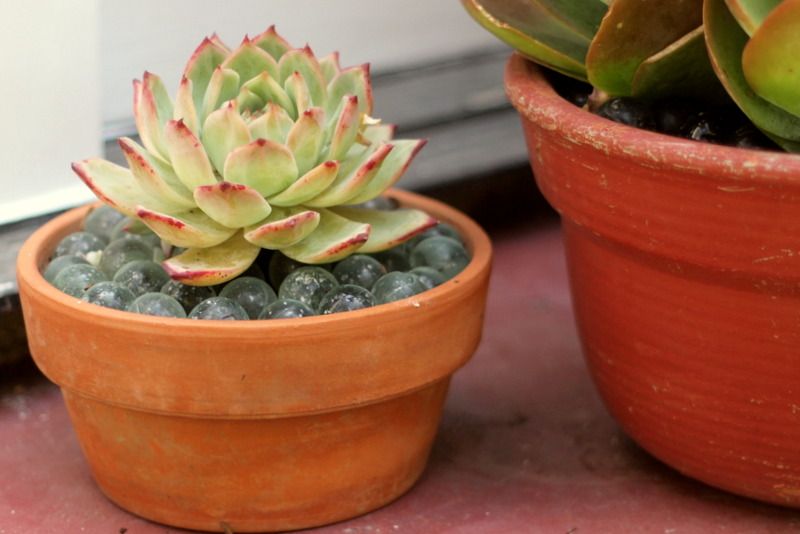
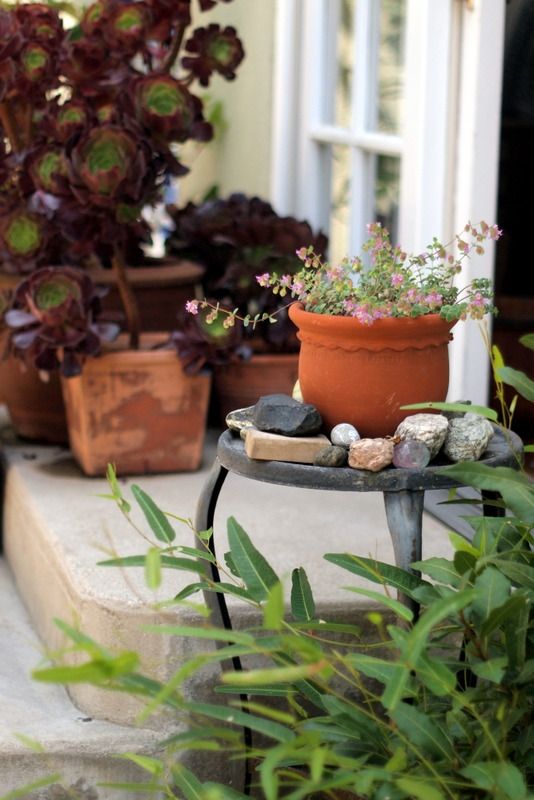
I asked Judy one “interview” question, something that’s been on my mind. How much does she plan for summer in her garden? Without the marked contrast of an extended winter and the mad race against a short growing season, not to mention continuing record drought, what is a summer garden in Southern California? Summer is “quiet,” was her word.
Stunningly beautiful, full of interest and intricate plays of texture would be my words.

Thank you for showing us this garden. I think this is a very important question you asked: What is a summer garden in southern California? This one will fare very well continuing to look good. Pots can be moved to more shade if need be, like moving them inside in a northern winter. The flowers on the hydrangea look as good as they dry as they do young and fresh. I would love to see more examples of summer gardens and the plants that are used.
I definitely got the feeling, looking at your photos, that this is a garden jam-packed with plants, just the way I like it.
Thank you for sharing your tour, Denise. I agree with Judy about summer being a period of quiet in the SoCal garden, at least in theory. In practice, I’m afraid I continue to push my zonal limits and then pound my chest and cry buckets when a ferocious heatwave wipes out my most recently acquired treasures.
Great job, as usual Denise. I love that garden & agree with everything you say about small gardens and the drive that pulls some of us to create them for ourselves.
Quiet except for the sound of the hose running and running. Great post, thanks.
@Jane, there’s countless answers to that question, aren’t there? The drought continues to be the elephant in the living room — or outdoor room, as the case may be 😉
@Loree, it truly is. My Albizia ‘Summer Chocolate’ slowly died in its large pot, so I was really taken with the woody stuff in containers.
@Kris, and it’s really too late to replant in May, except for annuals.
@Shirley, thanks for putting getting Judy’s garden on my radar.
@Hoov, all the in-ground plantings were tough, drought tolerant, and the containers were either succulents or experiments — lots of daily attention no doubt but not excessive amounts of water, I’m guessing. Not everyone wants to be tied to their gardens in summer to water pots tho.
Big oversized pots can make all the difference with growing water loving container plants, but that usually benefits by mixing up bigger woodies with smaller understory plants, which as I recall isn’t your preferred design aesthetic. Otherwise, oversized pots for small plants leads to sour soils and too wet root zones at the bottom of the pot. Multiple short irrigation cycles daily rather than one longer cycle can really help with container growing, and even out wide swings in soil moisture.
I grow many of the same plants as in Judy’s garden, and I have to laugh about the denial of not having much that prefers it mesic. Just those Begonias alone, (all of which I also grow and love), are definitely not drought tolerant.
As to being tethered to summer hand watering, that’s why I always design with extra big glazed pots, grouped settings, and all given life sustaining automated drip irrigation. Such allows me to mix and match water needs at will, and just check up on them once a month in client’s gardens. Even small trees can be good container candidates long term, if they handle densely rooted containers without inevitable wilting or decline. Things that work well for me include Tree Aloes, Metrosideros collina, palms such as Howeia or Chamaerops, Agaves, Protea ‘Pink Ice’, Cussonias, and many others going on 10 years in the same pots. Plants that decline with too crowded roots don’t fit the bill, or any that can’t bounce back from the occasional irrigation malfunction, like a dead battery on the controller.
But I truely enjoy the advantages of toughest plants for my own garden containers; succulents and bromeliads that can thrive even with just once a week watering. The various Begonias don’t even come close!
David, so funny that you lasered in on the begonias. I wondered if they were eye candy acquired for the tour and asked Judy if she carried those over year to year, and she said the does carry them through the winter, something I’ve been having trouble with. I do have a ‘Gene Daniels’ that’s getting as big as a gunnera this year, but luxurians didn’t reappear in spring. I find if anything I tend to overwater the begonias in pots, that they really need to dry out between drinks. I didn’t discuss the water bill with Judy, just engaging in speculation. It’s a very small garden, no lawn, the back patio mostly hardscape. And, yes, lots of containers!